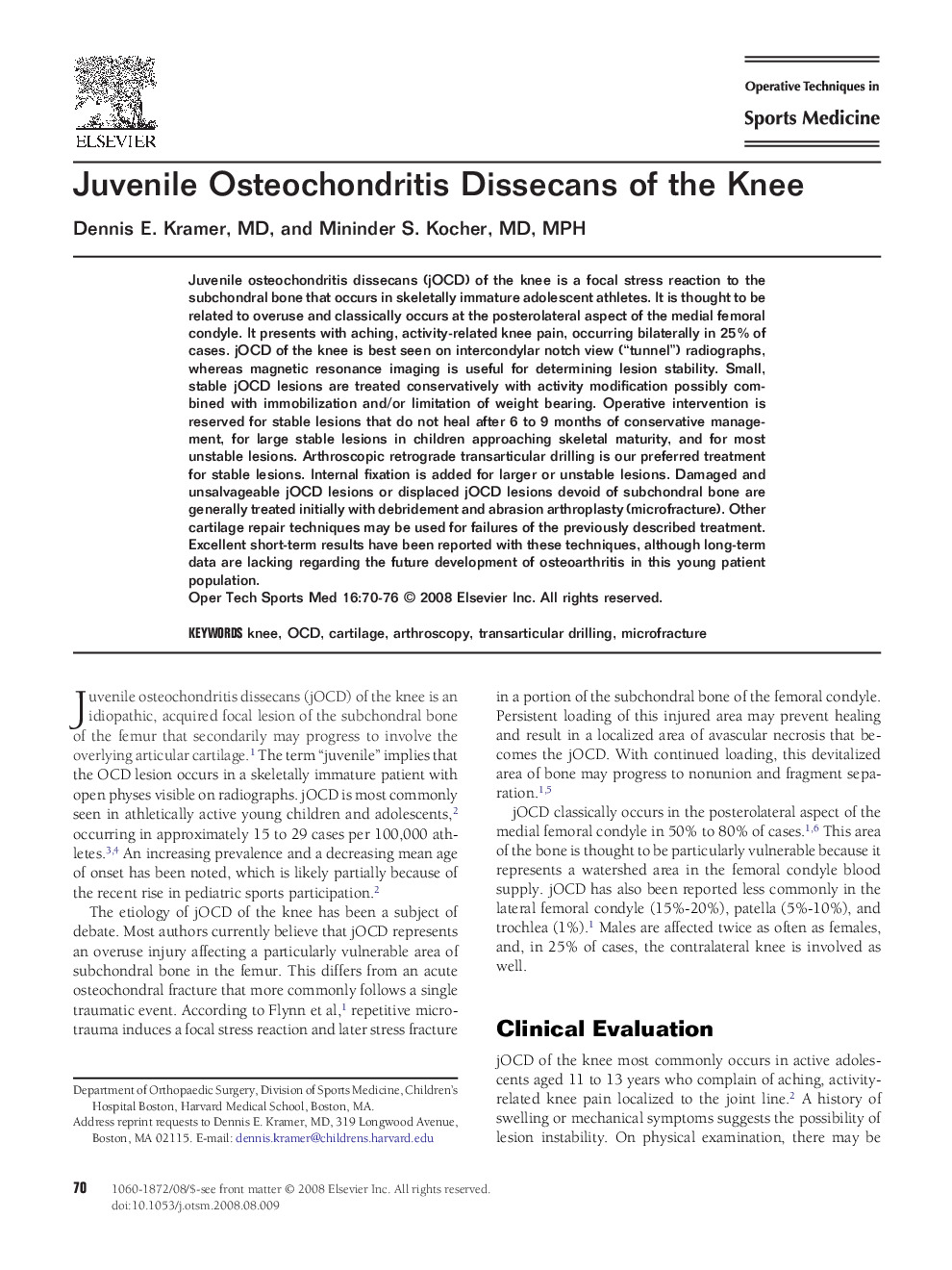| Article ID | Journal | Published Year | Pages | File Type |
|---|---|---|---|---|
| 4079969 | Operative Techniques in Sports Medicine | 2008 | 7 Pages |
Juvenile osteochondritis dissecans (jOCD) of the knee is a focal stress reaction to the subchondral bone that occurs in skeletally immature adolescent athletes. It is thought to be related to overuse and classically occurs at the posterolateral aspect of the medial femoral condyle. It presents with aching, activity-related knee pain, occurring bilaterally in 25% of cases. jOCD of the knee is best seen on intercondylar notch view (“tunnel”) radiographs, whereas magnetic resonance imaging is useful for determining lesion stability. Small, stable jOCD lesions are treated conservatively with activity modification possibly combined with immobilization and/or limitation of weight bearing. Operative intervention is reserved for stable lesions that do not heal after 6 to 9 months of conservative management, for large stable lesions in children approaching skeletal maturity, and for most unstable lesions. Arthroscopic retrograde transarticular drilling is our preferred treatment for stable lesions. Internal fixation is added for larger or unstable lesions. Damaged and unsalvageable jOCD lesions or displaced jOCD lesions devoid of subchondral bone are generally treated initially with debridement and abrasion arthroplasty (microfracture). Other cartilage repair techniques may be used for failures of the previously described treatment. Excellent short-term results have been reported with these techniques, although long-term data are lacking regarding the future development of osteoarthritis in this young patient population.
